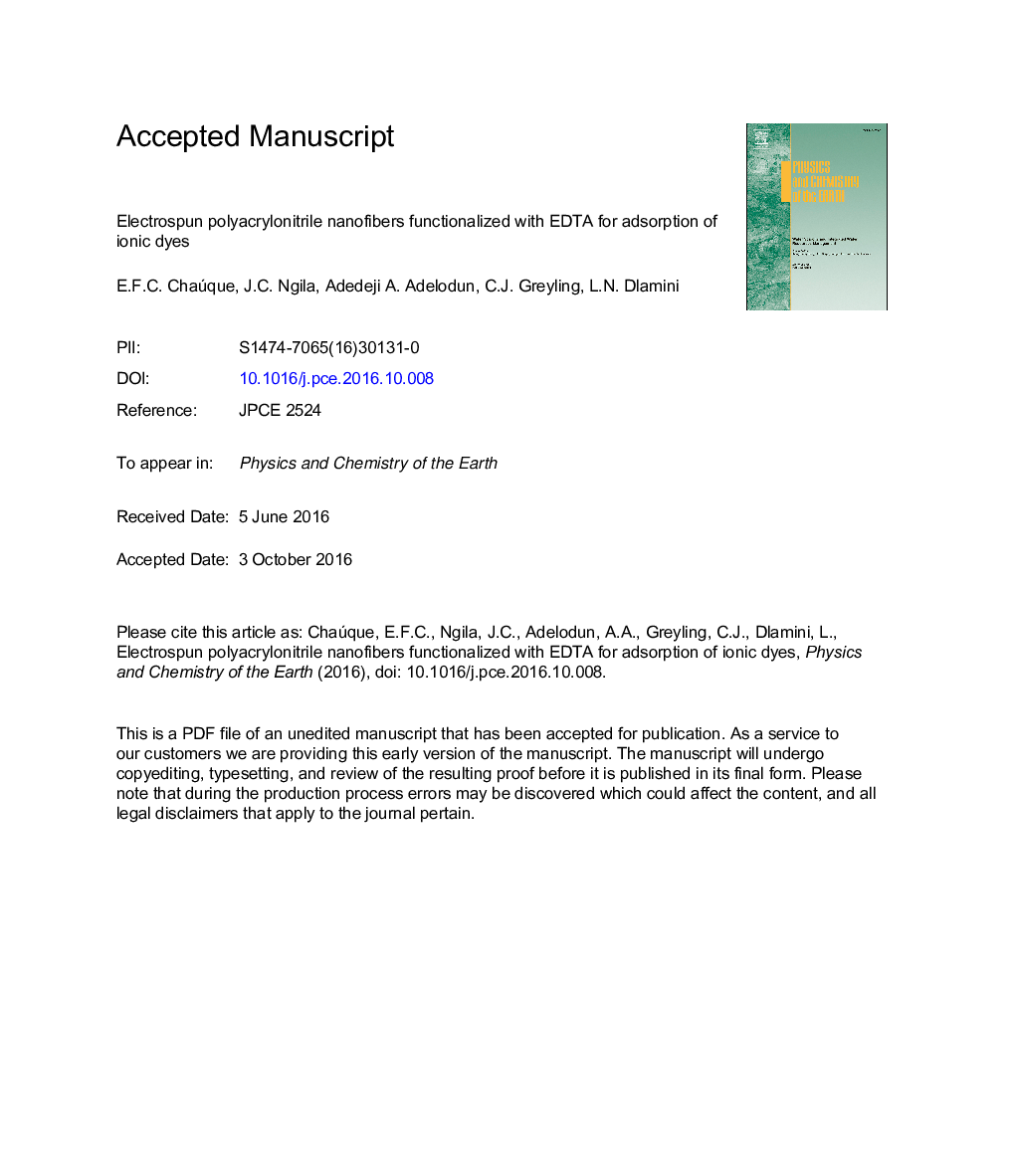| Article ID | Journal | Published Year | Pages | File Type |
|---|---|---|---|---|
| 5784562 | Physics and Chemistry of the Earth, Parts A/B/C | 2017 | 38 Pages |
Abstract
The manipulation of nanofibers' surface chemistry could enhance their potential application toward the removal of ionic dyes in wastewater. For this purpose, surface modification of electrospun polyacrylonitrile (PAN) nanofibers with ethylenediaminetetraacetic acid (EDTA) and ethylenediamine (EDA) crosslinker was experimented. The functionalized EDTA-EDA-PAN nanofibers were characterized using Fourier transform infrared (FT-IR) spectroscopy, X-ray photoelectron spectroscopy (XPS), scanning electron microscopy (SEM) and Brunauer-Emmett-Teller (BET) technique. The impregnation of EDA and EDTA chelating agents on the surface of PAN changed the distribution of nanofibers as proximity is increased (accompanied by reduced softness), but the nanofibrous structure of the pristine PAN nanofibers was not substantially altered. Adsorption equilibrium studies were performed with Freundlich, Langmuir and Temkin isotherm models with the former providing better correlation to the experimental data. The modified PAN nanofibers showed efficient sorption of methyl orange (MO) and reactive red (RR) from aqueous synthetic samples, evinced by the maximum adsorption capacities (at 25 °C) of 99.15 and 110.0 mg gâ1, respectively. The fabricated nanofibers showed appreciable removal efficiency of the target dye sorptives from wastewater. However, the presence of high metal ions content affected the overall extraction of dyes from wastewater due to the depletion of the adsorbent's active adsorptive sites.
Related Topics
Physical Sciences and Engineering
Earth and Planetary Sciences
Geochemistry and Petrology
Authors
Eutilério F.C. Chaúque, Langelihle N. Dlamini, Adedeji A. Adelodun, Corinne J. Greyling, J. Catherine Ngila,
